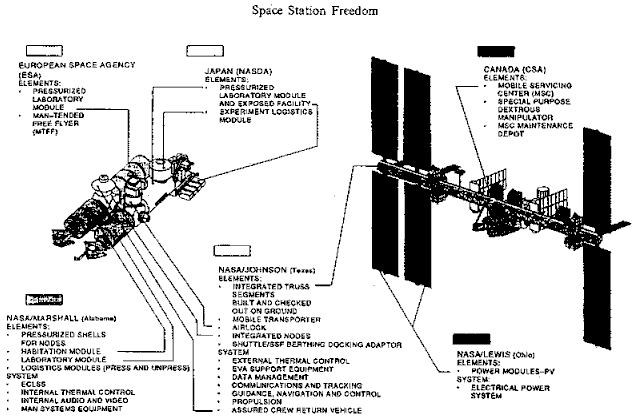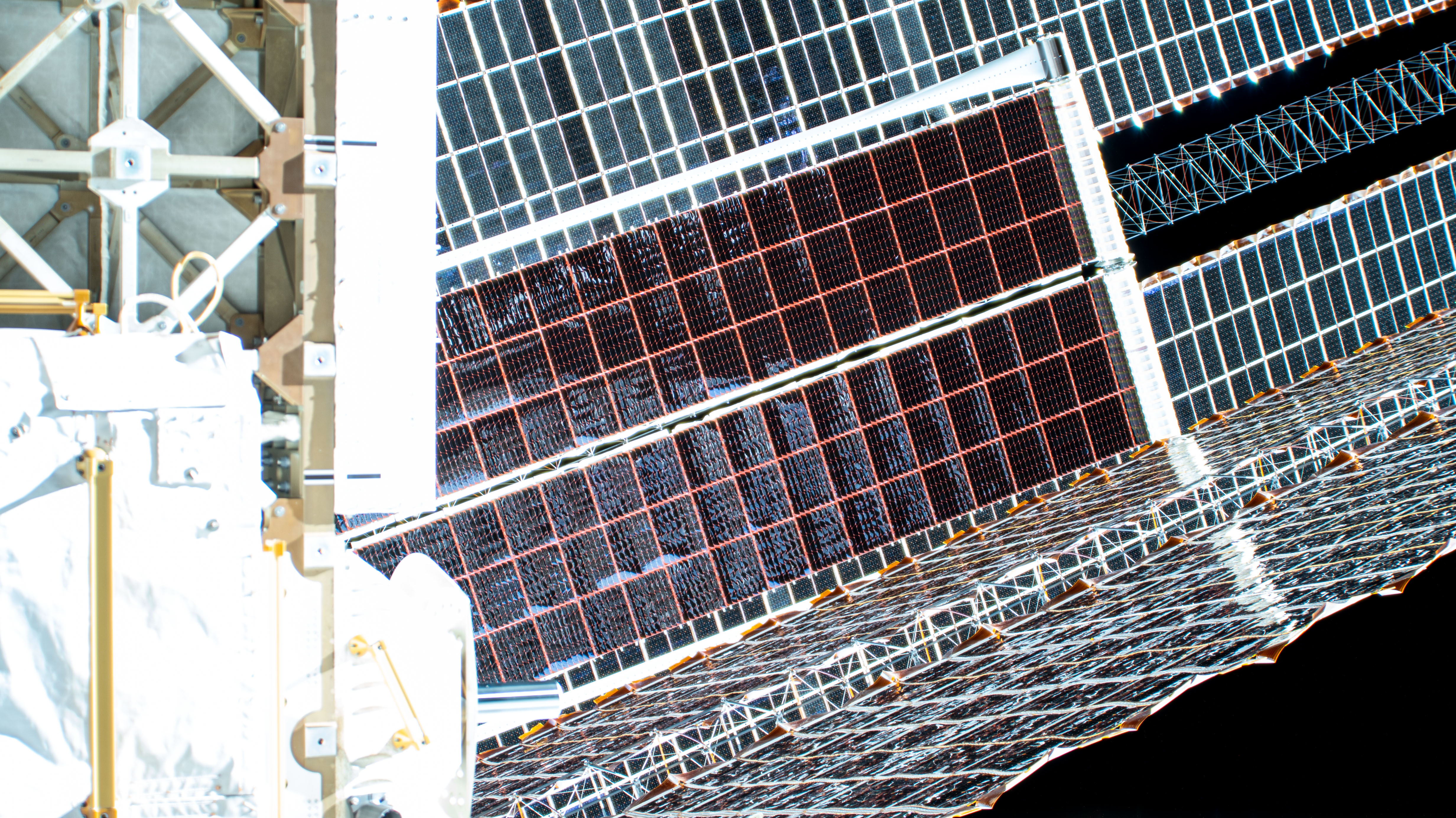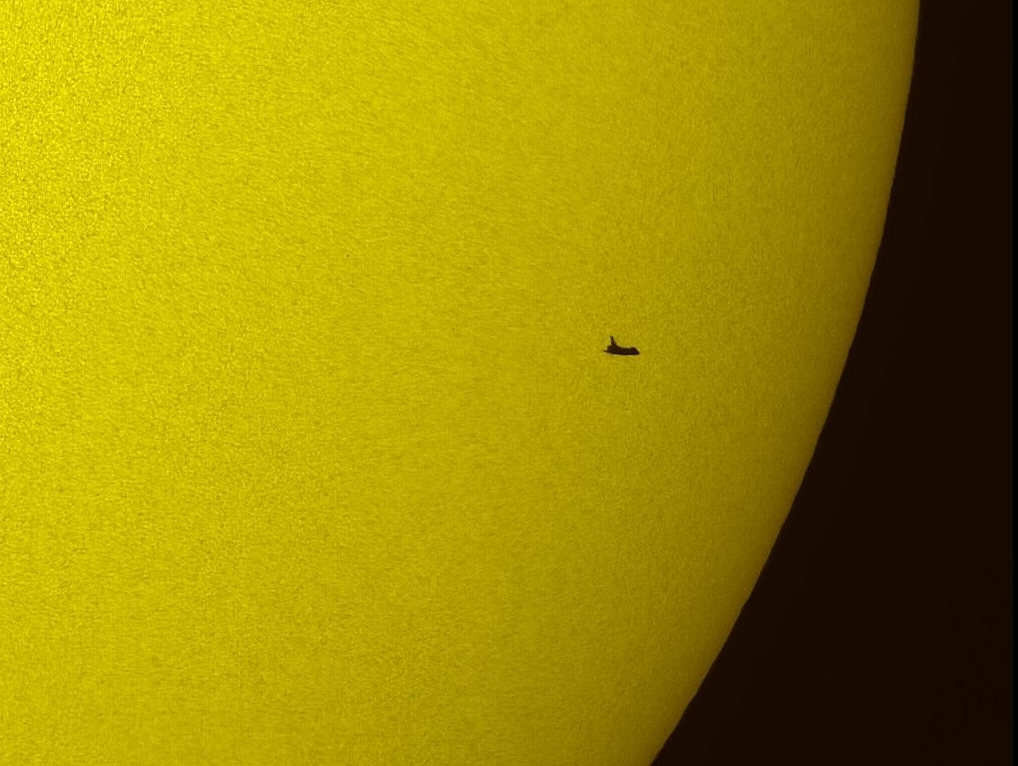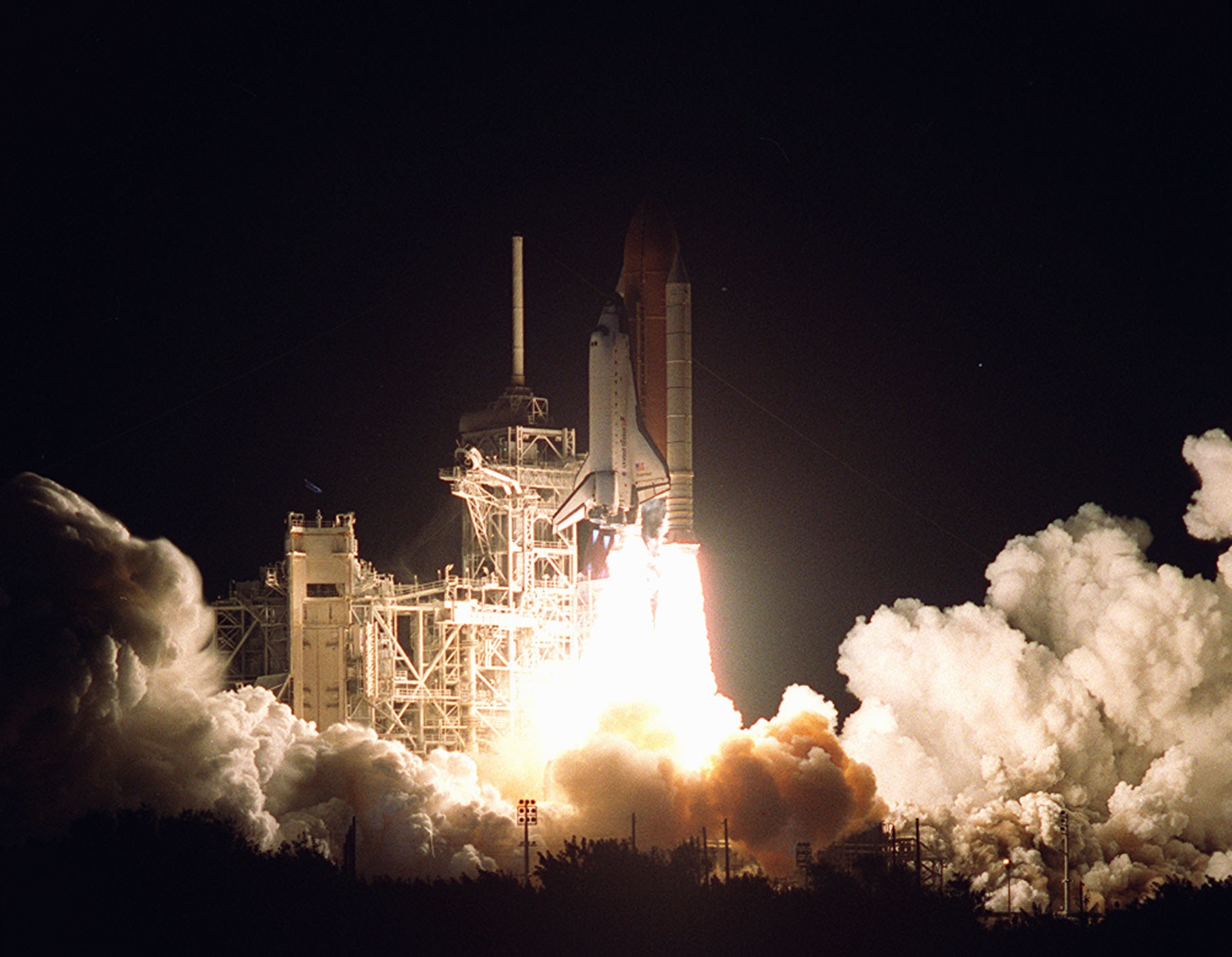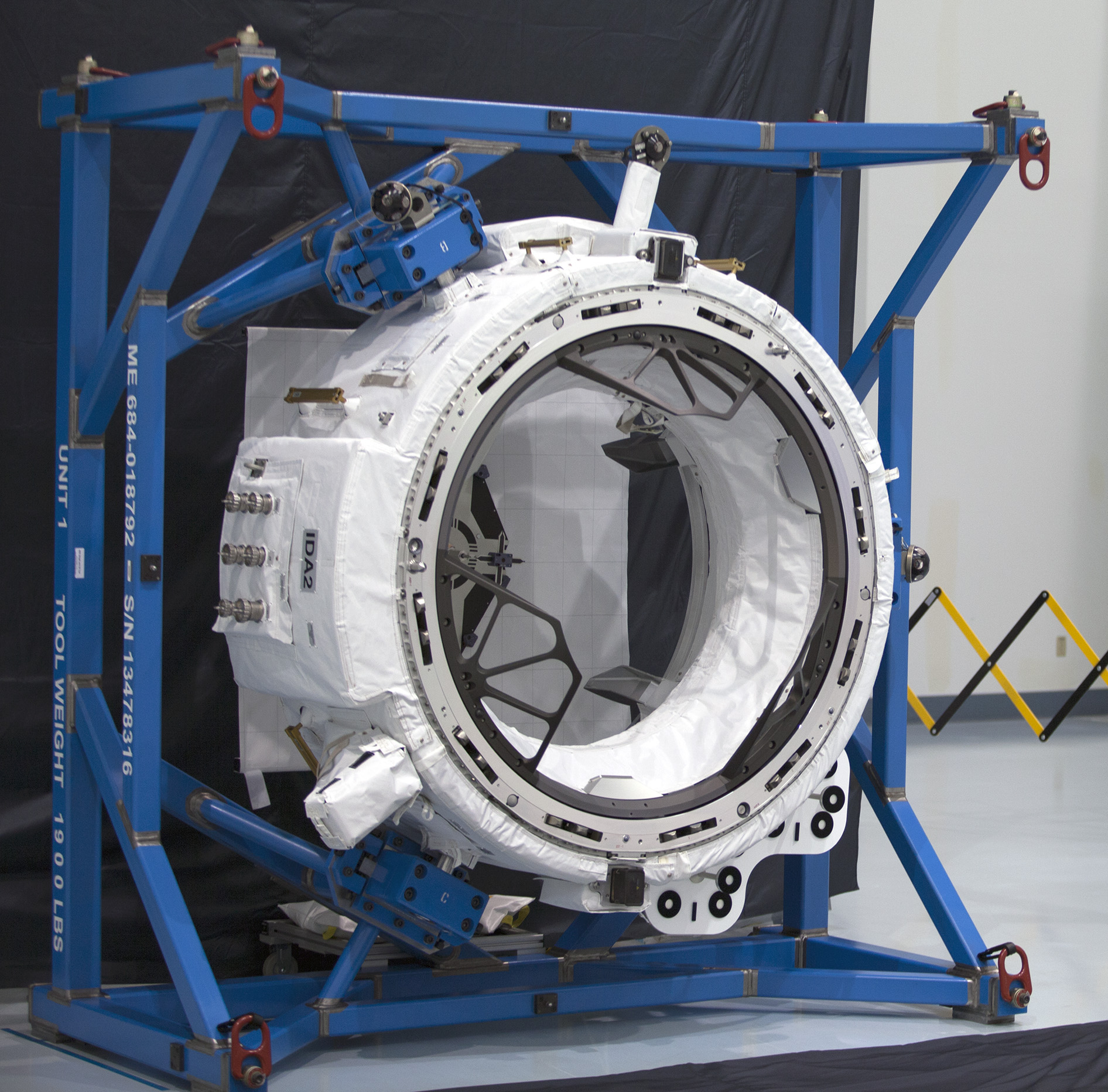|
Pressurized Mating Adapter
The Pressurized Mating Adapter (PMA) is a class of spacecraft adapters that convert the Common Berthing Mechanism (CBM) used on the US Orbital Segment to APAS-95 docking ports. There are three PMAs located on the International Space Station (ISS); the first two were launched with the ''Unity'' connecting module in 1998 aboard STS-88, and the third was launched in 2000 aboard STS-92. All three of the PMAs are now used to permanently connect parts of the ISS, so they are no longer available as docking ports for visiting spacecraft. Design/History Its origins lie in designs for the Pressurized Docking Mast, consisting of an off-axis frustoconical docking tunnel contained within a framework and a retractable coupling mechanism, later part of the Pressurized Berthing Adapter assembly that appeared in designs for Space Station Freedom 1987, and the reduced design referred to as 'Fred' 1991. After 1992-93 and the Russian integration into the International Space Station Alpha p ... [...More Info...] [...Related Items...] OR: [Wikipedia] [Google] [Baidu] |
Destiny (ISS Module)
The ''Destiny'' module, also known as the U.S. Lab, is the primary operating facility for United States, U.S. research payloads aboard the International Space Station (ISS). It was berthed to the ''Unity (ISS module), Unity'' module and activated over a period of five days in February, 2001. ''Destiny'' is NASA's first permanent operating orbital research station since Skylab was vacated in February 1974. The Boeing Company began construction of the research laboratory in 1995 at the Michoud Assembly Facility and then the Marshall Space Flight Center in Huntsville, Alabama, Huntsville, Alabama. ''Destiny'' was shipped to the Kennedy Space Center in Florida in 1998, and was turned over to NASA for pre-launch preparations in August 2000. It launched on February 7, 2001 aboard the on STS-98. Astronauts work inside the pressurized facility to conduct research in numerous scientific fields. Scientists throughout the world would use the results to enhance their studies in medicine, ... [...More Info...] [...Related Items...] OR: [Wikipedia] [Google] [Baidu] |
Station-to-Shuttle Power Transfer System
The electrical system of the International Space Station is a critical resource for the International Space Station (ISS) because it allows the crew to live comfortably, to safely operate the station, and to perform scientific experiments. The ISS electrical system uses solar cells to directly convert sunlight to electricity. Large numbers of cells are assembled in arrays to produce high power levels. This method of harnessing solar power is called photovoltaics. The process of collecting sunlight, converting it to electricity, and managing and distributing this electricity builds up excess heat that can damage spacecraft equipment. This heat must be eliminated for reliable operation of the space station in orbit. The ISS power system uses radiators to dissipate the heat away from the spacecraft. The radiators are shaded from sunlight and aligned toward the cold void of deep space. Solar array wing Each ISS solar array wing (often abbreviated "SAW") consists of two retr ... [...More Info...] [...Related Items...] OR: [Wikipedia] [Google] [Baidu] |
Space Shuttle Atlantis
Space Shuttle ''Atlantis'' (Orbiter Vehicle designation: OV‑104) is a Space Shuttle orbiter vehicle which belongs to NASA, the spaceflight and space exploration agency of the United States. ''Atlantis'' was manufactured by the Rockwell International company in Southern California and was delivered to the Kennedy Space Center in Eastern Florida in April 1985. ''Atlantis'' is also the fourth operational and the second-to-last Space Shuttle built. Its maiden flight was STS-51-J made from October 3 to 7, 1985. ''Atlantis'' embarked on its 33rd and final mission, also the final mission of a space shuttle, STS-135, on July 8, 2011. STS-134 by ''Endeavour'' was expected to be the final flight before STS-135 was authorized in October 2010. STS-135 took advantage of the processing for the STS-335 Launch on Need mission that would have been necessary if STS-134's crew became stranded in orbit. ''Atlantis'' landed for the final time at the Kennedy Space Center on July 21, 2011. ... [...More Info...] [...Related Items...] OR: [Wikipedia] [Google] [Baidu] |
Space Shuttle Endeavour
Space Shuttle ''Endeavour'' ( Orbiter Vehicle Designation: OV-105) is a retired orbiter from NASA's Space Shuttle program and the fifth and final operational Shuttle built. It embarked on its first mission, STS-49, in May 1992 and its 25th and final mission, STS-134, in May 2011. STS-134 was expected to be the final mission of the Space Shuttle program, but with the authorization of STS-135 by the United States Congress, ''Atlantis'' became the last shuttle to fly. The United States Congress approved the construction of ''Endeavour'' in 1987 to replace the Space Shuttle ''Challenger'', which was destroyed in 1986. NASA chose, on cost grounds, to build much of ''Endeavour'' from spare parts rather than refitting the Space Shuttle ''Enterprise'', and used structural spares built during the construction of '' Discovery'' and ''Atlantis'' in its assembly. History Following the loss of ''Challenger'', in 1986 NASA was authorized to begin the procurement process for a repl ... [...More Info...] [...Related Items...] OR: [Wikipedia] [Google] [Baidu] |
Integrated Truss Structure
The Integrated Truss Structure (ITS) of the International Space Station (ISS) consists of a linear arranged sequence of connected trusses on which various unpressurized components are mounted such as logistics carriers, radiators, solar arrays, and other equipment. It supplies the ISS with a bus architecture. It is approximately 110 meters long and is made from aluminum and stainless steel. Truss components All truss components were named after their planned end-positions: Z for zenith, S for starboard and P for port, with the number indicating the sequential position. The S0 truss might be considered a misnomer, as it is mounted centrally on the zenith position of ''Destiny'' and is neither starboard nor port side. Manufacturing ISS truss segments were fabricated by Boeing in its facilities at Huntington Beach, California (formerly McDonnell Douglas), Michoud Assembly Facility in New Orleans, Louisiana, Marshall Space Flight Center in Huntsville, Alabama, and in Tulsa, O ... [...More Info...] [...Related Items...] OR: [Wikipedia] [Google] [Baidu] |
STS-97
STS-97 was a Space Shuttle mission to the International Space Station (ISS) flown by Space Shuttle '' Endeavour''. The crew installed the first set of solar arrays to the ISS, prepared a docking port for arrival of the Destiny Laboratory Module, and delivered supplies for the station's crew. It was the last human spaceflight of the 20th century. Crew Spacewalks *'' Tanner and Noriega '' – EVA 1 *EVA 1 Start: 3 December 2000 – 18:35 UTC *EVA 1 End: 4 December 2000 – 02:08 UTC *Duration: 7 hours, 33 minutes *'' Tanner and Noriega '' – EVA 2 *EVA 2 Start: 5 December 2000 – 17:21 UTC *EVA 2 End: 5 December 2000 – 23:58 UTC *Duration: 6 hours, 37 minutes *'' Tanner and Noriega '' – EVA 3 *EVA 3 Start: 7 December 2000 – 16:13 UTC *EVA 3 End: 7 December 2000 – 21:23 UTC *Duration: 5 hours, 10 minutes Mission highlights During the 11-day mission, the primary objective was completed, which was to deliver and connect the first set of U.S.-provided solar arrays an ... [...More Info...] [...Related Items...] OR: [Wikipedia] [Google] [Baidu] |
Nadir
The nadir (, ; ar, نظير, naẓīr, counterpart) is the direction pointing directly ''below'' a particular location; that is, it is one of two vertical directions at a specified location, orthogonal to a horizontal flat surface. The direction opposite of the nadir is the zenith. Definitions Space science Since the concept of ''being below'' is itself somewhat vague, scientists define the nadir in more rigorous terms. Specifically, in astronomy, geophysics and related sciences (e.g., meteorology), the nadir at a given point is the local vertical direction pointing in the direction of the force of gravity at that location. The term can also be used to represent the lowest point that a celestial object reaches along its apparent daily path around a given point of observation (i.e. the object's ''lower culmination''). This can be used to describe the position of the Sun, but it is only technically accurate for one latitude at a time and only possible at the low latitudes. ... [...More Info...] [...Related Items...] OR: [Wikipedia] [Google] [Baidu] |
Spacelab
Spacelab was a reusable laboratory developed by European Space Agency (ESA) and used on certain spaceflights flown by the Space Shuttle. The laboratory comprised multiple components, including a pressurized module, an unpressurized carrier, and other related hardware housed in the Shuttle's cargo bay. The components were arranged in various configurations to meet the needs of each spaceflight. Spacelab components flew on a total of about 32 Shuttle missions, depending on how such hardware and missions are tabulated. Spacelab allowed scientists to perform experiments in micro-g environment , microgravity in geocentric orbit. There was a variety of Spacelab-associated hardware, so a distinction can be made between the major Spacelab program missions with European scientists running missions in the Spacelab habitable module, missions running other Spacelab hardware experiments, and other Space Transportation System (STS) missions that used some component of Spacelab hardware. Th ... [...More Info...] [...Related Items...] OR: [Wikipedia] [Google] [Baidu] |
SpaceX CRS-9
SpaceX CRS-9, also known as SpX-9, is a Commercial Resupply Service mission to the International Space Station which launched on 18 July 2016. The mission was contracted by NASA and is operated by SpaceX using a Dragon capsule. The cargo was successfully carried aboard SpaceX's Falcon 9 Flight 27. Launch and operations history A July 2014 NASA Flight Planning Integration Panel (FPIP) presentation had this mission scheduled no earlier than (NET) 7 December 2015. By December 2014, the launch had been pushed back to NET 9 December 2015. Following the failure of SpaceX CRS-7 on 28 June 2015, the launch date was left open and, in September 2015, was moved to NET 21 March 2016. The flight was later pushed to 24 June, 27 June, 16 July, and finally 18 July 2016, as the crewed mission Soyuz MS-01 took the 24 June slot. CRS-9 launched on 18 July 2016 at 04:44 UTC from Cape Canaveral SLC-40 aboard a Falcon 9 launch vehicle. After 9 minutes and 37 seconds the Dragon spacecraft ... [...More Info...] [...Related Items...] OR: [Wikipedia] [Google] [Baidu] |
International Docking Adapter
The International Docking Adapter (IDA) is a spacecraft docking system adapter developed to convert APAS-95 to the NASA Docking System (NDS). An IDA is placed on each of the International Space Station's (ISS) two open Pressurized Mating Adapters (PMAs), both of which are connected to the ''Harmony'' module. History Prior to IDA there were several different iterations of docking adapters that were meant to fill a similar role but were ultimately canceled. APAS to LIDS Adaptor System The APAS to LIDS Adaptor System (ATLAS) was announced in 2008. It would have been placed on the open PMAs and converted APAS-95 to the Low Impact Docking System (LIDS). ATLAS was planned to be launched on Orion's first two missions to the International Space Station. Orion's missions to the ISS were later canceled altogether and its role as a crew transporter was replaced by the Commercial Crew Program. Common Docking Adapter The Common Docking Adapter (CDA) was announced in 2009. It was plann ... [...More Info...] [...Related Items...] OR: [Wikipedia] [Google] [Baidu] |
Canadarm2
The Mobile Servicing System (MSS), is a robotic system on board the International Space Station (ISS). Launched to the ISS in 2001, it plays a key role in station assembly and maintenance; it moves equipment and supplies around the station, supports astronauts working in space, and services instruments and other payloads attached to the ISS and is used for external maintenance. Astronauts receive specialized training to enable them to perform these functions with the various systems of the MSS. The MSS is composed of three components: * the Space Station Remote Manipulator System (SSRMS), known as Canadarm2. * the Mobile Remote Servicer Base System (MBS). * the Special Purpose Dexterous Manipulator (SPDM, also known as "Dextre" or "Canada hand"). The system can move along rails on the Integrated Truss Structure on top of the US provided Mobile Transporter cart which hosts the MRS Base System. The system's control software was written in the Ada 95 programming language. Th ... [...More Info...] [...Related Items...] OR: [Wikipedia] [Google] [Baidu] |
STS-120
STS-120 was a Space Shuttle mission to the International Space Station (ISS) that launched on 23 October 2007 from the Kennedy Space Center, Florida. The mission is also referred to as ISS-10A by the ISS program. STS-120 delivered the ''Harmony'' module and reconfigured a portion of the station in preparation for future assembly missions. STS-120 was flown by , and was the twenty-third Space Shuttle mission to the ISS. Crew Crew notes As commander of STS-120, Pamela Melroy became the second woman (after Eileen Collins) to command a Space Shuttle mission. Additionally, the Expedition 16 crew that received STS-120 was commanded by Peggy Whitson, the first female ISS commander. The flight of STS-120 thus became the first time two female mission commanders were in space at the same time. Crew prior to the Space Shuttle ''Columbia'' disaster Prior to the Space Shuttle ''Columbia'' disaster, the original crew manifest for STS-120 was: The STS-120 mission patch was des ... [...More Info...] [...Related Items...] OR: [Wikipedia] [Google] [Baidu] |
